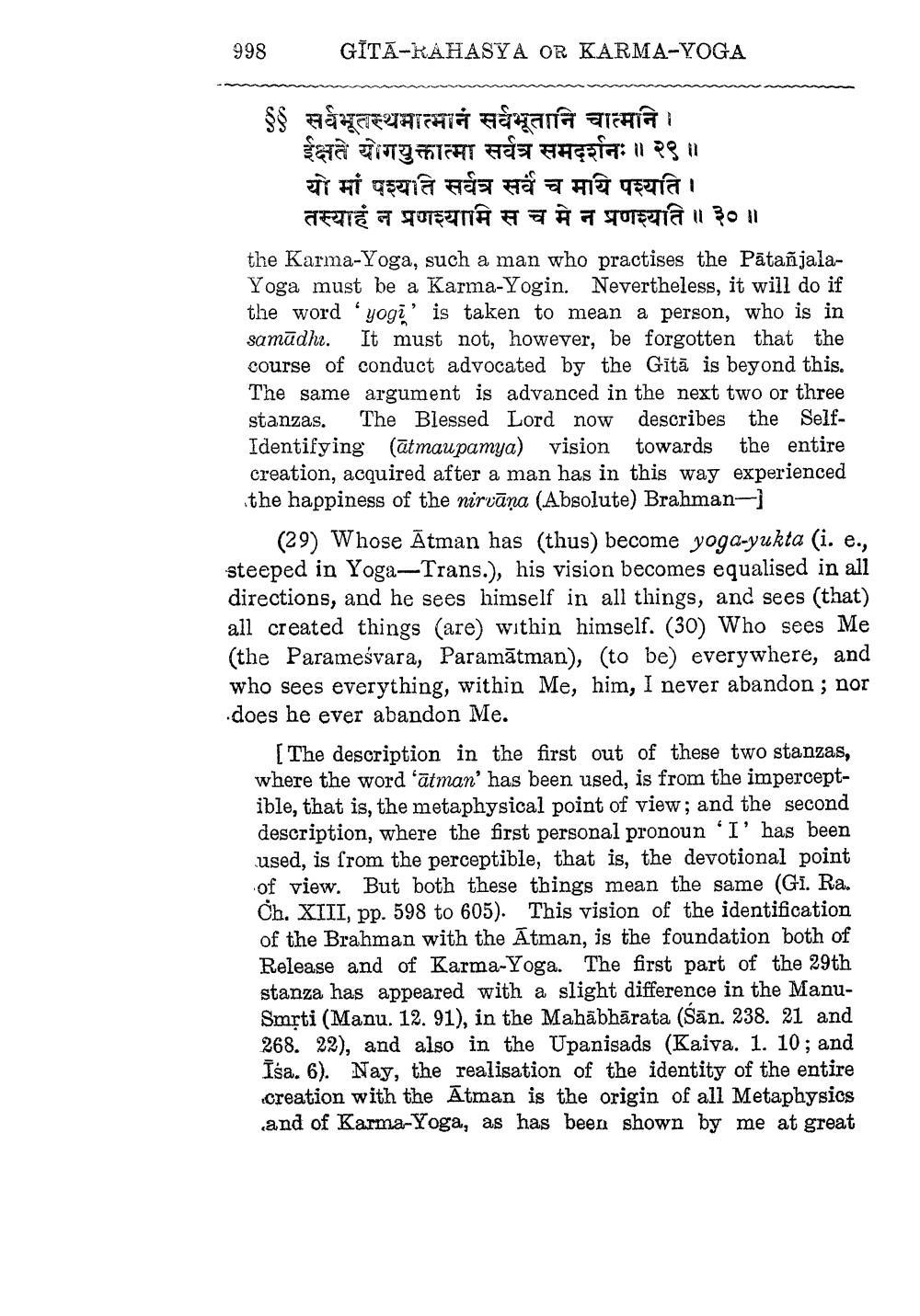________________
GITA-RAHASYA OR KARMA-YOGA
$$ सर्वभूतस्थमात्मानं सर्वभूतानि चात्मनि । ईक्षते योगयुक्तात्मा सर्वत्र समदर्शनः ॥ २९ ॥ यो मां पश्यति सर्वत्र सर्वे च माय पश्यति । तस्याहं न प्रणश्यामि स च मे न प्रणश्यति ॥ ३० ॥
998
the Karma-Yoga, such a man who practises the PātañjalaYoga must be a Karma-Yogin. Nevertheless, it will do if the word 'yogi' is taken to mean a person, who is in samadhi. It must not, however, be forgotten that the course of conduct advocated by the Gita is beyond this. The same argument is advanced in the next two or three stanzas. The Blessed Lord now describes the SelfIdentifying (atmaupamya) vision towards the entire creation, acquired after a man has in this way experienced the happiness of the nirvana (Absolute) Brahman-]
(29) Whose Atman has (thus) become yoga-yukta (i. e., steeped in Yoga-Trans.), his vision becomes equalised in all directions, and he sees himself in all things, and sees (that) all created things (are) within himself. (30) Who sees Me (the Parameśvara, Paramatman), (to be) everywhere, and who sees everything, within Me, him, I never abandon; nor does he ever abandon Me.
[The description in the first out of these two stanzas, where the word 'atman' has been used, is from the imperceptible, that is, the metaphysical point of view; and the second description, where the first personal pronoun 'I' has been used, is from the perceptible, that is, the devotional point of view. But both these things mean the same (GI. Ra. Ch. XIII, pp. 598 to 605). This vision of the identification of the Brahman with the Atman, is the foundation both of Release and of Karma-Yoga. The first part of the 29th stanza has appeared with a slight difference in the ManuSmrti (Manu. 12. 91), in the Mahabharata (San. 238. 21 and 268. 22), and also in the Upanisads (Kaiva. 1. 10; and Isa. 6). Nay, the realisation of the identity of the entire creation with the Atman is the origin of all Metaphysics and of Karma-Yoga, as has been shown by me at great




